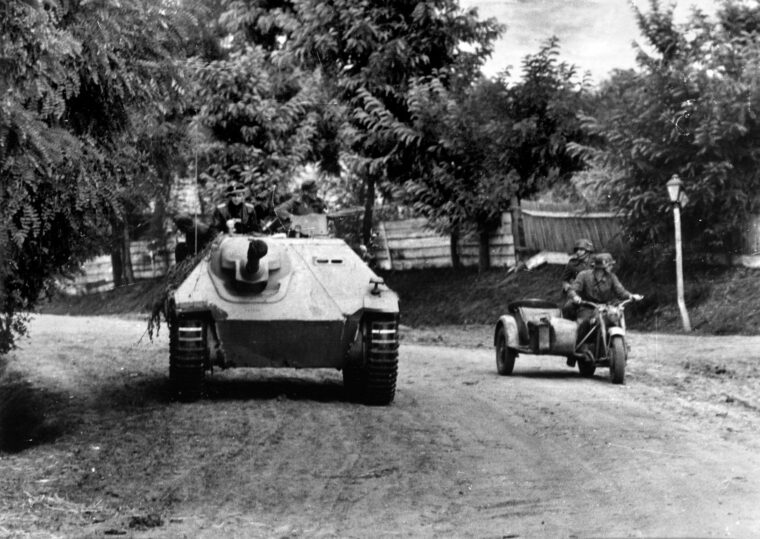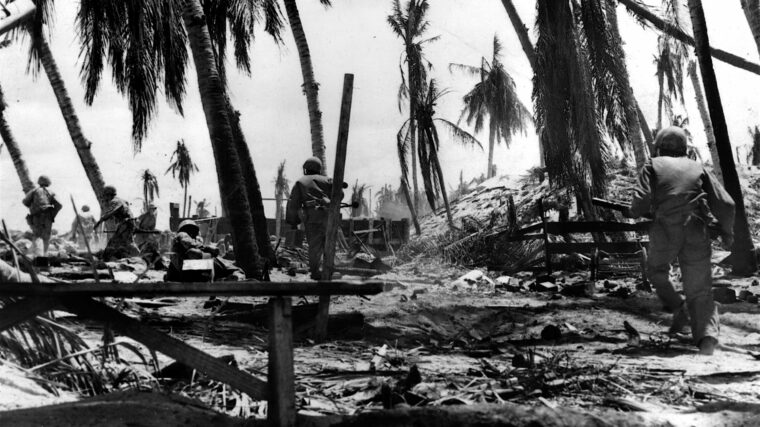
“My Sister and I”: An Elaborate Literary Hoax
By Sheldon WinklerDuring World War II, Queen Wilhelmina of the Netherlands, from her exile in London, urged her staff to find a 12-year-old Dutch boy, Dirk van der Heide. Read more

During World War II, Queen Wilhelmina of the Netherlands, from her exile in London, urged her staff to find a 12-year-old Dutch boy, Dirk van der Heide. Read more

On the morning of November 6, 1942, a force of 267 Marines took its first steps into the jungle from a landing point at Aola Bay, roughly 30 miles east of the American perimeter on Guadalcanal. Read more

The often see-saw action across the North African littoral from 1940-1942 was fostered in part by both the British and Axis forces racing to innovate and implement novel tactics and upgraded weaponry. Read more

By early April 1941, Lt. Gen. Erwin Rommel’s German Afrika Korps, combined with Italian units, had cleared the British from Libya except for the seaport of Tobruk. Read more

The Marines were tired, eager for a rest and the opportunity to get themselves and their equipment back into battle condition. Read more

At the beginning of World War II, the globe seemed huge—covered by thousands of miles of ocean and uninhabited land mass, but by the time it ended everything had been brought closer together, thanks largely to the four-engine transports of the United States Army Air Transport Command, particularly the Douglas C-54 Skymaster. Read more

Another invasion also began on June 6, 1944. By virtue of the International Date Line, the two invasions sailed on different days, but both sortied within the same 24-hour period. Read more

From the Supermarine Spitfire to the North American P-51 Mustang, and from the Soviet Yak series to the Vought F4U Corsair, the Allies were able to field a formidable array of fighter planes against the Axis powers in World War II. Read more

Lieutenant Harold Gilson Payne, Jr., was one of the first Americans to die at Iwo Jima. He did not fall in the carnage of the Marine invasion that began on February 19, 1945. Read more

April 1, 1945, was Easter Sunday and April Fool’s Day. It was also the day the U.S. Army and Marine Corps launched Operation Iceberg, their massive amphibious assault on the Japanese island of Okinawa. Read more

Lieutenant General Omar Bradley, commander of the U.S. First Army, considered his 90th Infantry Division a problem unit. Read more

By 1943 it was obvious to the Germans that their tank production could not keep pace with battlefield losses. Read more

In the early morning hours of March 23, 1943, the U.S. 1st Infantry Division was preparing to attack. Read more

Lieutenant John Bulkeley knew something was in the wind when General Douglas MacArthur invited him for an informal lunch at his headquarters on Topside, the highest elevation on the island fortress of Corregidor. Read more

The 13,000 ton Independence-class aircraft carrier USS Princeton, which was commissioned on February 25, 1943, quickly became known as the “Fighting Lady.” Read more

Four Medals of Honor were awarded for acts of conspicuous gallantry during the invasion of Tarawa atoll in the Pacific during World War II. Read more

For the Allied tankers and infantrymen of the American, British, Canadian, and Free French armies battling German Panther and Tiger tanks in Normandy in the summer of 1944, the Sherman tank’s failures were glaringly evident as their own shells bounced off the hulls of the Nazi armor and they were themselves destroyed at a far greater range by the powerful German tanks. Read more

Maybe the Turks were just bad at picking the winning side. In World War I the Central Powers were defeated by the Allies, so in October 1939 they switched to ally with Britain and France. Read more

By mid-1942, the towering German battleship Tirpitz stood alone as the largest, most powerful warship in the world. Read more

History was made in the Mediterranean Sea on the night of Monday, November 11, 1940, when the Italian Navy’s battle fleet was devastated at Taranto, off the Ionian coast of southern Italy. Read more